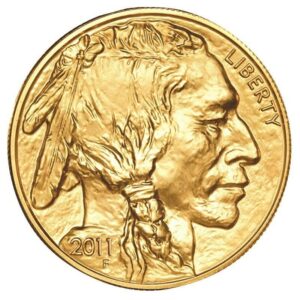Springtime is a great time to tackle ambitious projects like organizing your closet or finally cleaning out your cluttered garage. But spring cleaning can go beyond your living space. Spring into action and make lasting changes to your financial future. Here, U.S. Money Reserve helps you explore ways to tidy up your finances, including how to open a gold IRA or roll over funds into one of these accounts.
1. Organize your documents.
It’s easy to get overwhelmed by financial documents, whether they’re snail-mailed or emailed to you. Make sure all of your financial records, including bills and tax returns, are kept in a secure but easily accessible spot and are sorted into various categories (like taxes and insurance). Consider buying file folders to save your financial documents and using a paper shredder to get rid of old documents containing personal data.
2. Cut down on paperwork.
Once you have things organized, it’s time to declutter. Financial documents like bills can pile up quickly. If you’re buried by stacks of financial papers, look at going paperless. For instance, you might want to sign up for bills to be sent electronically rather than by traditional mail. This can decrease paper clutter—and can increase the likelihood of efficiently managing your finances.
3. Review your finances.
Springtime can be the best time to dig into your income and expenses and pinpoint whether you need to boost your income, slash your costs, or both. Do your bank statements and credit card bills show you’re eating out a lot at pricey restaurants? Are you putting aside enough money for retirement? Does it appear you need to find another revenue stream to improve your financial status?
Author and personal finance expert Ramit Sethi says not knowing where their money goes is one of the biggest mistakes people make.
“How many times have you opened your bills, winced, then shrugged and said, ‘I guess I spent that much?’” Sethi writes on his website.
Combing through your income and expenses—particularly as you’re preparing your tax return—can help you answer these and many other important financial questions.
4. Examine your withholding.
If you’re on track to receive a hefty tax refund this year, you may want to check the tax withholding for your paycheck. Adjusting the withholding could put more money in each paycheck rather than giving you a once-a-year tax windfall.
5. Go comparison shopping.
No, we’re not talking about shopping for a new sports car or a new fishing boat. Instead, we’re referring to shopping for lower rates on your auto insurance, home insurance, cable TV service, cell phone service, and other recurring expenses. This effort could carve out more money for retirement and other purposes.
6. Assess your credit.
Any time you declutter your finances, you should evaluate your credit. In particular, this means determining whether you should still be whipping out one of your credit cards with a 21.99% interest rate to make purchases instead of leaning on a card with a 17.99% interest rate. If you carry balances from month to month, switching to the 17.99% card from the 21.99% card could save hundreds or even thousands of dollars in interest over the long haul.
Besides doing the math on your credit cards, check your credit report and credit score to see whether you should make moves that could put you in a better position to qualify for loans, credit cards, and other lending products with favorable terms.
7. Conduct a retirement checkup.
Just as you should undergo regular checkups at the doctor’s office, you should consistently do retirement checkups. What does your projected retirement income look like? Are you setting aside enough money in your 401(k) at work? Are you maxing out contributions to your IRA? Should you open a gold IRA or roll over money into one of these accounts?
A gold IRA can provide a tax-advantaged way to diversify your portfolio through the purchase of gold (or silver, platinum, or palladium) and potentially help shield you from inflation and market fluctuations. Gold can be included as an alternative asset in an IRA by rolling over or transferring funds from a qualified account, such as a 401(k) or IRA, into a self-directed IRA. You must buy gold for a gold IRA through an IRS-approved custodian or trustee. An IRS-approved, third-party depository then stores the gold for you.
Out with the old and in with the new. Spring is a time for new perspectives and fresh starts. Could your finances use a scrubbing? Start with a free Gold Information Kit and contact U.S. Money Reserve.








